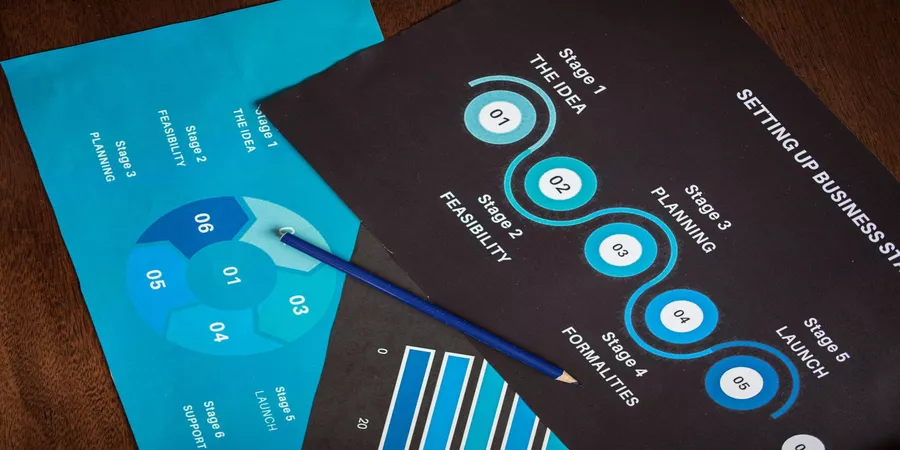The SEO landscape has undergone a seismic shift that demands immediate strategic adaptation: zero-click searches now account for 60-65% of all Google searches, representing a dramatic evolution from traditional organic traffic models. This transformation, accelerated by AI Overviews trigger rates surging from 6.49% in January 2025 to 13.14% by March 2025, fundamentally challenges conventional SEO success metrics while creating new opportunities for visibility and brand authority in an increasingly competitive digital environment.
Executive Summary: The rise of zero-click searches from 24.4% to 27.2% year-over-year, combined with mobile zero-click rates reaching 75%, requires SEO professionals to pivot from traffic-focused strategies to visibility-centered approaches. Success in this new paradigm demands mastery of Answer Engine Optimization (AEO), featured snippets tactics, and AI Overviews strategy to maintain competitive advantage when traditional organic traffic continues declining across industries.
Understanding the Zero-Click Revolution and Its Strategic Implications
The zero-click phenomenon represents more than statistical curiosity—it signals Google’s transformation into an answer engine that prioritizes immediate information delivery over website referral traffic. Current data reveals that news publishers have experienced the most dramatic impact, with organic visits declining from 2.3 billion to 1.7 billion while zero-click rates increased from 56% to 69% within a single year.
Mobile search behavior drives much of this transformation, with smartphone users demonstrating clear preferences for instant answers over website navigation. The 75% mobile zero-click rate reflects user intent evolution toward quick information consumption rather than deep content exploration, particularly for local searches, basic definitions, and factual queries.
Industry analysis reveals significant variation in zero-click impact across sectors. E-commerce searches maintain higher click-through rates due to transactional intent, while informational queries increasingly resolve within search results pages. Healthcare, finance, and legal sectors experience moderate zero-click rates due to regulatory requirements and user trust considerations that favor authoritative website visits.
The economic implications extend beyond individual websites to entire industries. Publishers report advertising revenue declines of 15-30% as page views diminish, while service-based businesses struggle with reduced lead generation from organic search. However, early adopters who successfully optimize for zero-click visibility report increased brand recognition and qualified lead quality despite lower traffic volumes.
Featured Snippets Optimization: The Gateway to Zero-Click Dominance
Featured snippets represent the most accessible entry point for zero-click optimization, appearing in approximately 19% of desktop searches and 16% of mobile searches. Strategic snippet optimization requires understanding the four primary formats: paragraph snippets (82% of appearances), list snippets (11%), table snippets (5%), and video snippets (2%).
Paragraph snippet optimization demands precise question-and-answer formatting within content structure. The optimal approach involves identifying target questions through keyword research tools like AnswerThePublic, AlsoAsked, and Google’s “People Also Ask” sections. Content should provide direct answers within 40-50 words immediately following H2 headings that mirror searcher queries.
List snippet capture requires structured formatting using numbered or bulleted lists for process-oriented queries. Research indicates that 7-8 item lists achieve optimal snippet selection rates, with clear action verbs beginning each list item. Recipe instructions, step-by-step tutorials, and ranking lists perform exceptionally well in this format.
Table snippets dominate comparison queries and data-heavy searches. Successful table optimization involves creating clean HTML tables with descriptive headers and consistent formatting. Price comparisons, specification charts, and statistical data tables frequently earn snippet placement when properly structured with relevant keywords in table headers.
Advanced snippet strategies include targeting multiple snippet opportunities within single pages through comprehensive topic coverage. Long-form content that addresses related questions and subtopics increases snippet capture probability while building topical authority signals valued by Google’s algorithms.
AI Overviews Strategy: Adapting to Generative Search Results
AI Overviews represent the newest frontier in zero-click optimization, with trigger rates doubling from 6.49% to 13.14% in just two months. These generated summaries appear most frequently for informational queries, how-to searches, and comparison requests, drawing information from multiple sources to create comprehensive responses.
Optimization for AI Overviews requires content that demonstrates clear expertise, authority, and trustworthiness through comprehensive topic coverage and authoritative source citations. Content that successfully appears in AI Overviews typically features detailed explanations, step-by-step processes, and supporting data from credible sources.
Technical optimization involves implementing structured data markup, maintaining consistent NAP (Name, Address, Phone) information across platforms, and creating content that directly answers searcher intent. AI Overviews favor content with clear hierarchical structure, descriptive headings, and logical information flow that facilitates machine comprehension.
Content strategy for AI Overviews success focuses on creating authoritative, comprehensive resources that address entire topic clusters rather than individual keywords. Pages that earn AI Overviews placement typically contain 2,000+ words, multiple supporting images or diagrams, and extensive internal linking to related content.
Answer Engine Optimization: Beyond Traditional SEO Tactics
Answer Engine Optimization (AEO) represents the evolution of SEO practices to accommodate AI-powered search experiences. AEO strategies prioritize content structure, semantic relevance, and user intent satisfaction over traditional keyword density and backlink metrics.
Entity-based optimization forms the foundation of effective AEO, requiring content that clearly establishes relationships between people, places, things, and concepts relevant to target topics. Successful AEO implementation involves creating content hubs that thoroughly explore entity relationships through comprehensive topic coverage and strategic internal linking.
Natural language processing optimization demands content written in conversational tones that mirror spoken queries and voice search patterns. Long-tail keyword integration should feel natural within content flow while addressing specific user questions and pain points identified through search query analysis.
Semantic markup implementation through JSON-LD structured data helps search engines understand content context and relationships. Essential schema types for AEO include FAQ markup, How-To markup, Organization markup, and Article markup that provides clear content categorization and topic association.
Structured Data Implementation for Enhanced Search Visibility
Structured data serves as the bridge between website content and search engine comprehension, becoming increasingly critical as AI systems rely on marked-up data for answer generation. Strategic schema implementation can increase search visibility even when traditional rankings decline.
FAQ schema markup represents the highest-impact structured data implementation for zero-click optimization. Properly implemented FAQ markup frequently appears in search results as expandable sections, providing immediate answer access while maintaining brand visibility. Optimal FAQ implementation includes 5-10 commonly asked questions with comprehensive 150-200 word answers.
How-To schema markup captures process-oriented searches that frequently trigger zero-click results. Successful How-To markup includes detailed step descriptions, required materials lists, estimated completion times, and supporting images. This markup type particularly benefits service-based businesses and educational content creators.
Local business schema becomes essential for location-based searches where map pack appearances substitute for organic listings. Complete local business markup should include accurate NAP information, business hours, service areas, review ratings, and multiple business categories to maximize local search visibility.
Product schema implementation helps e-commerce sites maintain visibility in shopping results and product carousels that increasingly replace traditional organic listings. Essential product markup includes pricing information, availability status, review ratings, and detailed product descriptions that support AI-generated shopping responses.
Local SEO Adaptation for Map Pack Domination
Local search results demonstrate the most dramatic zero-click impact, with map pack appearances often satisfying user intent without website visits. Local SEO strategy must adapt to maximize visibility within these confined result formats while driving qualified leads through enhanced listings.
Google Business Profile optimization becomes the primary local SEO focus, requiring comprehensive profile completion with accurate business information, high-quality photos, regular post updates, and active review management. Businesses with complete, actively managed profiles receive 70% more location actions than incomplete profiles.
Review generation and management directly impacts map pack visibility and user selection behavior. Strategic review acquisition involves systematic customer outreach, review response management, and reputation monitoring across multiple platforms. Businesses with 4.0+ star ratings and regular fresh reviews maintain superior local search visibility.
Local content creation should target neighborhood-specific keywords and location-based service queries. City pages, service area content, and locally-focused blog posts help establish geographic relevance signals while providing opportunities for local snippet capture and AI Overview inclusion.
Citation consistency across online directories, social platforms, and industry-specific listings reinforces local authority signals. Regular citation audits ensure NAP consistency while identifying new citation opportunities in niche directories relevant to specific industries and service categories.
Performance Metrics Evolution: Measuring Success Beyond Traffic
Traditional SEO metrics require fundamental reconsideration as zero-click searches reduce website traffic while potentially maintaining or increasing business impact. Modern SEO measurement must incorporate visibility metrics, brand awareness indicators, and qualified lead quality assessments.
Share of Voice (SOV) measurements track brand visibility across search results regardless of click-through behavior. Tools like SEMrush, Ahrefs, and BrightEdge provide SOV tracking that encompasses traditional rankings, featured snippets, knowledge panels, and AI Overview appearances to deliver comprehensive visibility assessment.
Brand mention tracking across digital platforms helps quantify the awareness impact of zero-click visibility. Social listening tools and Google Alerts monitoring can identify increased brand discussions and recognition that result from enhanced search presence even without direct website traffic.
Lead quality analysis often reveals that zero-click optimized businesses attract higher-quality prospects who arrive with better understanding of services and stronger purchase intent. Conversion rate improvements and higher average order values frequently offset reduced traffic volumes for businesses successfully adapting to zero-click optimization.
Assisted conversion tracking through Google Analytics and CRM integration helps identify the complete customer journey impact of zero-click visibility. Many prospects initially discover brands through zero-click results before returning through direct searches or branded queries for conversion completion.
Content Strategy Transformation for Visibility-First SEO
Content strategy must evolve from traffic generation focus to authority building and visibility maximization approaches that succeed in zero-click environments. This transformation requires comprehensive topic coverage, answer-focused formatting, and multi-format content development.
Topic cluster architecture creates comprehensive resource collections that dominate entire subject areas rather than competing for individual keywords. Successful cluster implementation involves pillar pages that broadly cover major topics supported by detailed subtopic pages that address specific questions and use cases.
Answer-first content formatting prioritizes immediate value delivery through clear question-and-answer structures, summary sections, and scannable formats that facilitate snippet capture. Content should provide complete answers within the first 100 words while offering deeper exploration for engaged users.
Multi-format content development ensures visibility across various search result features including traditional listings, image results, video carousels, and shopping sections. Comprehensive content strategies incorporate text, images, videos, infographics, and interactive elements that address diverse user preferences and search contexts.
Strategic Recommendations for Zero-Click Success
SEO professionals must embrace visibility-focused strategies that prioritize brand authority and search presence over traditional traffic metrics. Success requires comprehensive understanding of searcher intent, technical optimization excellence, and content that genuinely serves user needs regardless of click-through behavior.
Investment in Answer Engine Optimization tools and training becomes essential for competitive advantage maintenance. Teams should develop expertise in structured data implementation, entity-based optimization, and AI Overview capture techniques while maintaining traditional SEO foundation skills.
Cross-functional collaboration with content marketing, social media, and public relations teams creates synergistic approaches that maximize brand visibility across multiple touchpoints. Integrated strategies leverage zero-click visibility to drive awareness that converts through various channels rather than relying solely on direct search traffic.
Frequently Asked Questions
Q: How do zero-click searches impact website traffic and revenue? A: Zero-click searches reduce direct website traffic by 20-40% for many sites, but businesses optimizing for visibility often see improved lead quality and higher conversion rates from remaining traffic, partially offsetting volume declines.
Q: What types of content perform best for featured snippet optimization? A: Clear question-and-answer formats, numbered lists (7-8 items optimal), comparison tables, and step-by-step processes achieve highest snippet capture rates. Content should answer queries within 40-50 words immediately following relevant headings.
Q: How can local businesses adapt to increased zero-click local searches? A: Focus on complete Google Business Profile optimization, active review management, local content creation, and consistent citation building. Map pack visibility becomes more critical than traditional local organic rankings.
Q: What structured data types provide the most zero-click SEO value? A: FAQ schema, How-To markup, Local Business schema, and Product markup offer highest impact. These types directly support AI Overview generation and featured snippet eligibility while enhancing search result visibility.
Q: How should SEO metrics change to account for zero-click searches? A: Incorporate Share of Voice tracking, brand mention monitoring, lead quality analysis, and assisted conversion measurement alongside traditional rankings and traffic metrics to accurately assess SEO performance impact.
Q: What role do AI Overviews play in future SEO strategy? A: AI Overviews represent the fastest-growing zero-click format, requiring comprehensive topic coverage, authoritative content creation, and technical optimization that facilitates AI comprehension and content synthesis.
Q: How can e-commerce sites succeed despite reduced organic shopping traffic? A: Implement comprehensive product schema markup, optimize for shopping carousels and product featured snippets, focus on brand visibility in comparison queries, and develop content that supports purchase decisions across the entire buying journey.
The zero-click search revolution demands strategic adaptation rather than resistance. SEO professionals who master visibility-focused optimization techniques, embrace Answer Engine Optimization principles, and develop comprehensive measurement frameworks will maintain competitive advantage in an increasingly complex search landscape.
How will your organization adapt its SEO strategy to thrive in the zero-click era? What visibility metrics will you implement to measure success beyond traditional traffic indicators?







